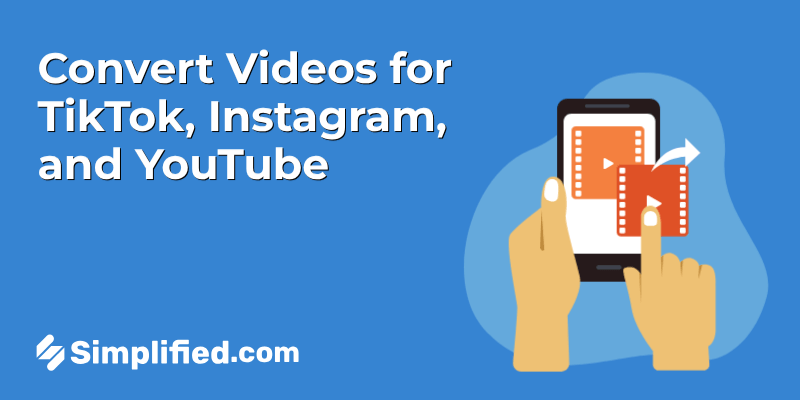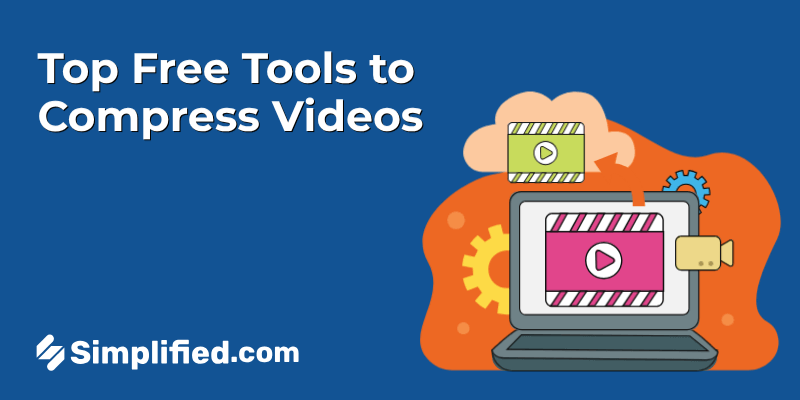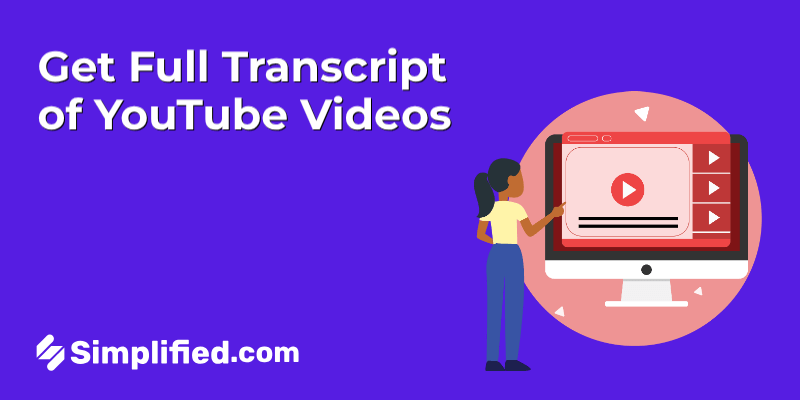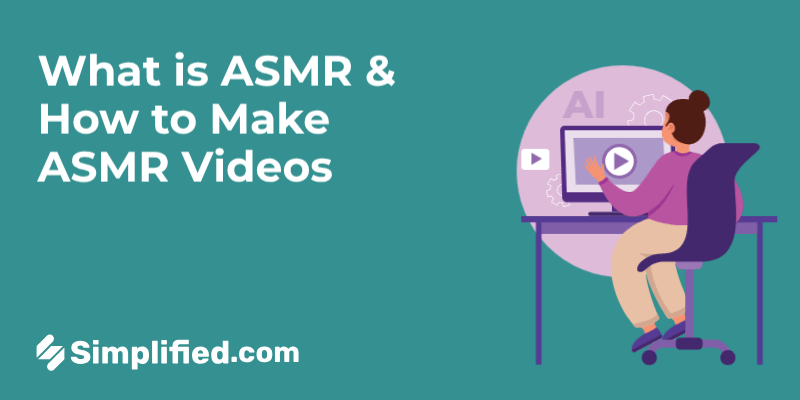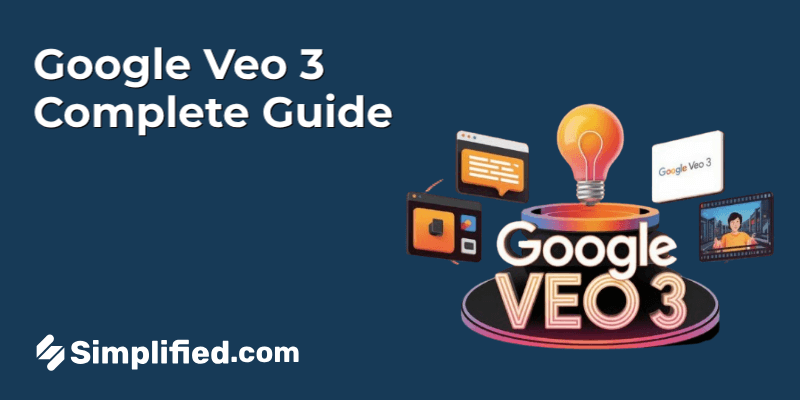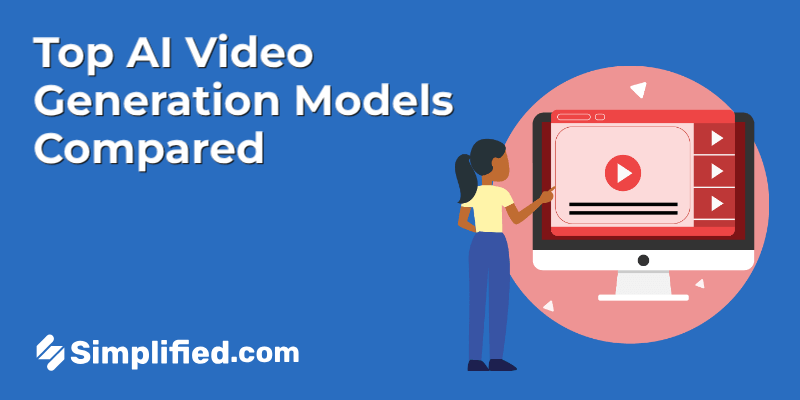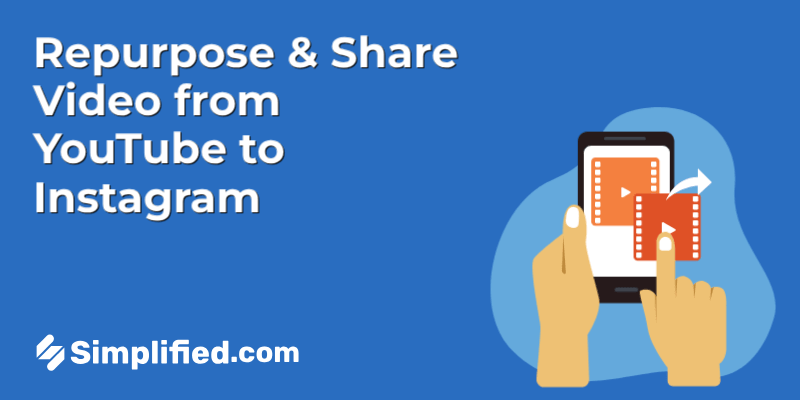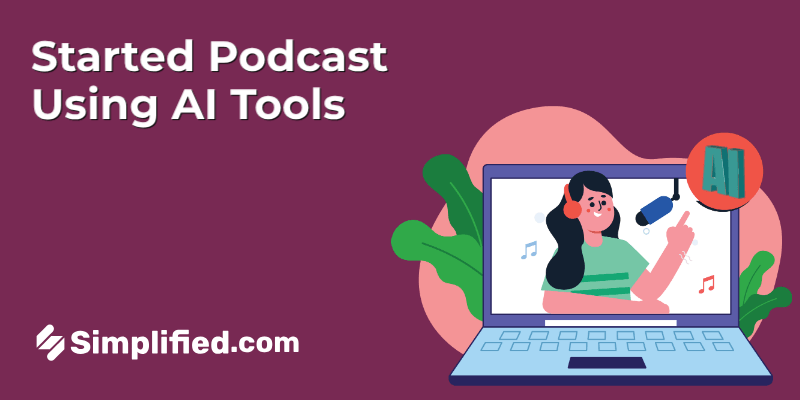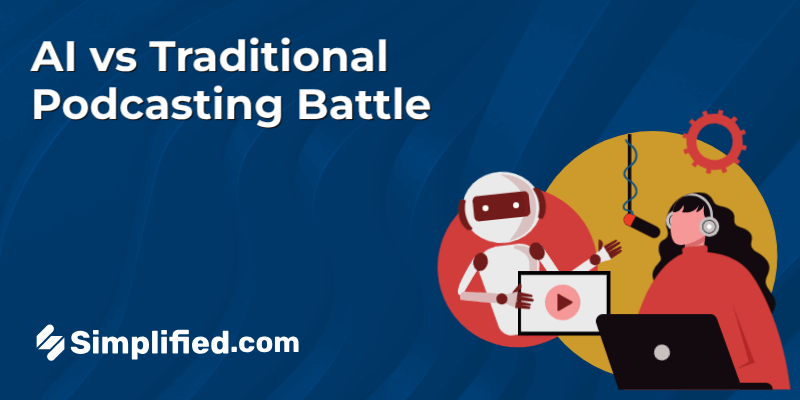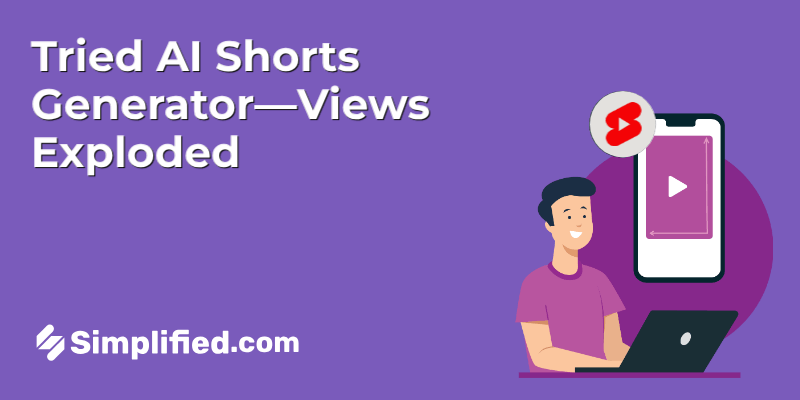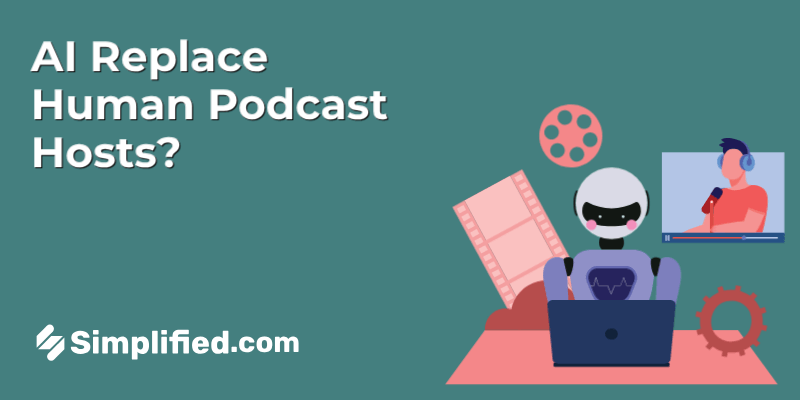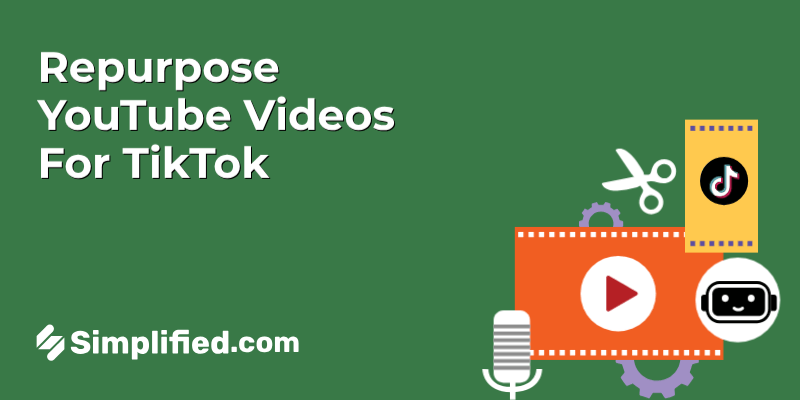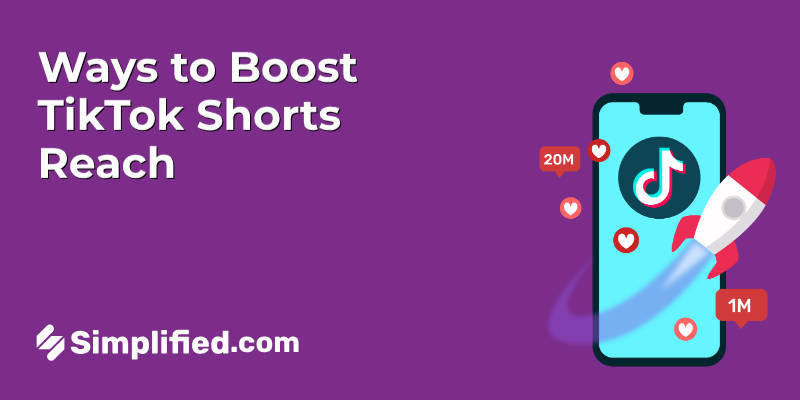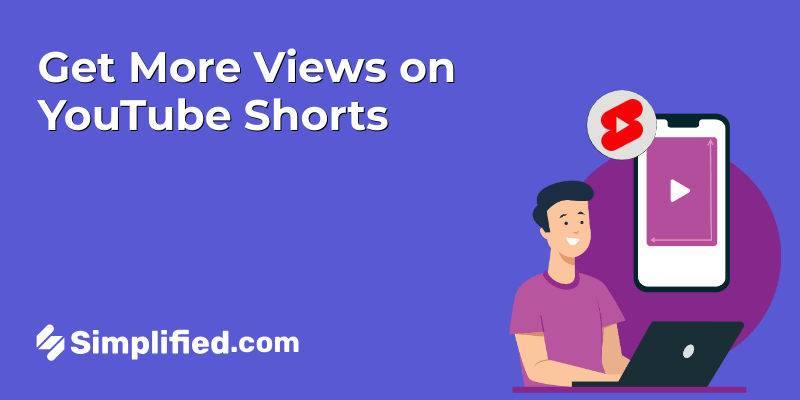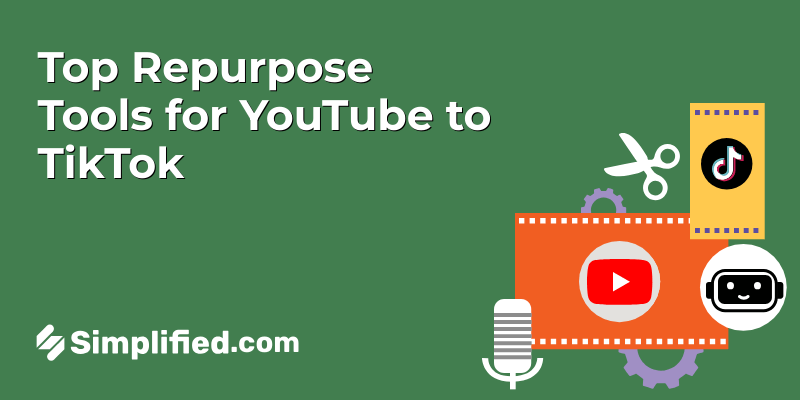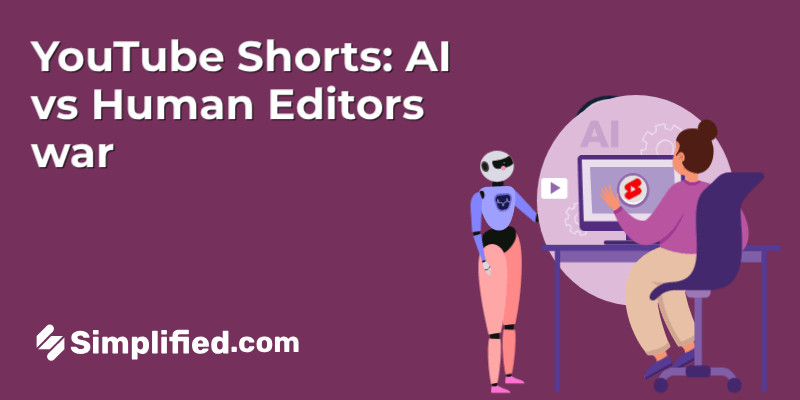
YouTube Shorts, the platform’s answer to the rise of short-form video content, have taken the internet by storm. These bite-sized videos, usually under 60 seconds, offer creators a fantastic way to reach new audiences and potentially go viral. The increasing popularity of YouTube Shorts has led many to explore various tools and methods to improve their content, including both AI and human editing processes.
This section will provide a brief overview of YouTube Shorts rise in popularity, introduce the AI and human editing processes, and preview the criteria we will use to compare them. Our main criteria for this comparison include:
- Editing Speed
- Creativity
- Audience Engagement
- Overall Quality
By evaluating these factors, we can better understand the strengths and limitations of AI-edited versus human-edited YouTube Shorts and help you decide which method might be best suited for your content creation needs.
AI vs. Human: Who Edits the Best YouTube Short?

Editing Speed: Who’s Faster?
Let’s compare the speed and efficiency between AI editing tools and human editors to understand who manages to save time and simplfy workflows better.
Time Required for AI Editing vs. Human Editing
When it comes to speed, AI editing tools have a clear advantage. Advanced algorithms can analyze video content and perform edits in mere seconds or minutes. Tasks like cutting clips, adding transitions, and even applying filters can be executed almost instantaneously. This significantly reduces the time required for routine editing tasks.
- AI Editing: Typically takes seconds to minutes for basic edits.
- Human Editing: Depends on the complexity and duration of the video; generally takes from several minutes to hours.
While humans bring artistic insight and creative judgment to the editing process, they require more time to make those fine-tuned adjustments that machines cannot replicate. The human touch is indispensable for nuanced storytelling, but it comes with a time investment.
Bonus: How to Turn Old Video Into Viral Youtube Shorts
Workflow Efficiency: AI Tools vs. Human Editors
AI tools are designed to boost workflow efficiency. They automate repetitive tasks, which allows editors to focus more on creative aspects. This automation can drastically reduce turnaround times, making it easier for content creators to produce more videos in a shorter time frame.
- AI tools offer features like automatic clip selection, instant color correction, and sound optimization.
- Human editors need to manually review and edit each segment, which is time-consuming but generally more detailed.
However, integrating AI tools into the workflow also requires some learning and adaptation. Human editors may need time to get comfortable with these tools to harness their full potential.
Impact of Rapid Edits on Content Release Schedules
The quick turnaround time offered by AI editors can significantly impact content release schedules, which is crucial for maintaining audience interest and staying ahead of trends. Faster edits mean more frequent posting, which is essential for keeping the audience engaged.
- AI Editing: Can process and publish videos quickly, allowing for a consistent content schedule.
- Human Editing: Takes longer but allows for more meticulous polishing, ensuring high-quality output.
It’s important to strike a balance. While AI youtube shorts generator provide the speed, human editors add the creative flair that resonates well with audiences. using both can result in a productive and efficient editing process, ensuring timely and high-quality content.
Bonus: Top 5 AI Youtube Shorts Generator in 2025
Creativity: Can AI Match Human Ingenuity?
One of the critical aspects of editing YouTube Shorts is the level of creativity that goes into the process. Creativity in video editing involves making unique choices in transitions, special effects, and overall storytelling to deliver a compelling final product. So, let’s explore whether AI can truly match human ingenuity in creative editing tasks.
Examples of Creative Editing Tasks
- Special Effects: Adding unique visual effects that make the viewing experience better.
- Transitions: Smoothly transitioning between scenes to maintain viewer interest.
- Storytelling: Combining visual and audio elements to create a narrative that resonates with the audience.
Assessment of AI Capabilities in Generating Creative Edits
AI has made significant strides in the realm of video editing. Modern AI tools can:
- Automatically Generate Transitions: AI can analyze video content and apply transitions where they are contextually suitable.
- Create Special Effects: Advanced algorithms can now add pre-designed special effects and filters, saving time and effort.
- Better Storytelling: AI can assist in maintaining narrative consistency by identifying the best sequences and arranging them logically.
While AI is adept at these tasks, it operates within pre-set parameters and lacks the personal touch brought by a human editor.
Comparison with Human Editor’s Proficiency in Creative Editing
Human editors bring an unparalleled level of creativity to their work, driven by intuition, experience, and a deep understanding of audience preferences. Some areas where human editors excel are:
- Personal Touch: They can make nuanced decisions that cater to the emotional context of the content.
- Adaptability: Human editors can adapt styles based on the latest trends and audience feedback.
- Innovative Storytelling: They can think outside the box, creating unique and unexpected sequences that AI might overlook.
However, this creativity comes at the cost of longer editing times and higher resource consumption.
In conclusion, while AI has made impressive advances in mimicking human creativity, it is not yet capable of fully matching human editors. The combination of AI’s efficiency and human ingenuity might be the best approach to video editing.
For more information on AI video tools, check out How to Create Viral YouTube Shorts and YouTube Shorts Monetization 101.
Audience Engagement: Who Captures the Audience Better?
Understanding audience engagement is crucial when evaluating the effectiveness of AI-edited versus human-edited YouTube Shorts. Engagement can be measured using various metrics, each offering insights into how well the content resonates with viewers.
Metrics for Measuring Audience Engagement
- Comments: The number of reactions, questions, and discussions started by viewers beneath a video.
- Shares: How frequently viewers share the video link across various platforms.
- Likes: The count of thumbs-up or hearts indicating viewer approval.
- Viewer Retention: The average watch time and percentage of video watched.
- Subscriber Growth: The increase in subscribers as a result of the video.
Analysis of Audience Response to AI-edited vs. Human-edited Youtube Shorts
When examining AI-edited and human-edited shorts, several patterns have emerged:
- Comments: Human-edited videos often receive more personalized comments, reflecting the unique touch and relatability that viewers appreciate. AI-edited videos may not evoke the same emotional response but can generate interest through precision editing.
- Shares: Creative and unique content, whether AI or human-edited, tends to be shared widely. The key difference is that human-edited videos might offer a more personal story or humor, which can be more shareable.
- Likes: Human edits usually garner more likes because of their potential to entertain and resonate on a personal level. However, AI-edited shorts that delve into trending topics or use high-quality visuals can also gather substantial likes.
Discussion of Engagement Trends and Viewer Preferences
Engagement trends reveal that the presence of a human touch in editing often leads to higher emotional connections and community building around the video content. Viewers tend to prefer content that feels personal and relatable, suggesting that human-edited shorts often perform better in this regard. On the other hand, AI-edited videos are appreciated for their efficiency and trend-aligned content, which can capture quick engagement, especially for informational or visually-driven content.
The balance might lie in a hybrid approach where the efficiency of AI tools supports the creativity of human editors, merging precision with the personalized touch that engages audiences deeply.
Bonus: YouTube Shorts Trends in 2025: How AI Can Help You Stay Ahead
Overall Quality: The Final Verdict
When it comes to evaluating the overall quality of YouTube Shorts, it’s essential to consider a few key criteria. By understanding these factors, we can better compare the final outputs of AI-edited and human-edited videos, weighing the pros and cons of each approach.
Criteria for Evaluating Quality:
- Editing Precision: How accurately are the clips cut and transitions applied?
- Creativity: Does the video flow well and keep the viewer’s attention with creative elements?
- Audience Retention: How long does the audience watch the video before clicking away?
- Consistency: Are color grading, sound levels, and other aspects consistent throughout the video?
- Engagement: Does the video prompt likes, comments, and shares from viewers?
Comparison of AI vs. Human Editors:
When comparing AI-edited videos to those edited by humans, there are clear distinctions that emerge:
- Editing Precision: AI can cut clips with precision and apply standard transitions quickly, but may lack nuance. Human editors can make more precise adjustments tailored to the video’s context.
- Creativity: Humans often excel in creativity, adding unique touches that resonate with audiences. AI, while fast, might struggle with highly creative and context-specific decisions.
- Audience Retention: Human-edited videos might hold audiences longer due to their refined storytelling elements, whereas AI-edited may be shorter but might lack engaging narrative structures.
- Consistency: AI ensures uniformity in color grading and sound levels. Human editors, while generally consistent, may have slight variations that could add character to the video.
- Engagement: Human-edited videos are likely to prompt higher engagement given the nuanced touch and emotional connection. AI might lag in this area as it can overlook subtleties that encourage interaction.
Pros and Cons:
- AI Editors Pros: Faster turnaround times, cost-effective, consistent quality.
- AI Editors Cons: Limited creativity, potential lack of contextual understanding, may miss subtleties in audience engagement.
- Human Editors Pros: High creativity, understanding of context, better audience engagement.
- Human Editors Cons: Higher cost, longer editing times, potential for slight inconsistency.
In the end, the choice between AI and human editing for YouTube Shorts comes down to the specific needs of the content creator. While AI tools such as an AI YouTube Shorts generator offer speed and consistency, human editors bring creativity and a personal touch that can significantly enhance the viewer experience.
Strengths and Limitations: Both Sides of the Coin
When it comes to editing YouTube Shorts, understanding the strengths and limitations of both AI and human editors is crucial. Each method has its distinct advantages and challenges, and knowing these can help content creators make informed decisions.
Advantages of AI Editing
AI editing tools offer numerous benefits for creating YouTube Shorts:
- Speed: AI tools can edit videos much faster than a human editor, as they can process data and apply edits almost instantaneously.
- Consistency: AI can ensure consistent quality across multiple videos by applying the same standards and settings without variation.
- Efficiency: AI-powered editors can quickly cut out undesirable sections, add effects, and synchronize audio, saving creators significant time.
Advantages of Human Editing
On the other hand, human editors bring unique strengths to the table:
- Creativity: Humans can infuse creativity and originality into edits, making each video unique and engaging.
- Adaptability: Human editors can adapt to the specific nuances of each video project, modifying their approach based on the content’s needs and audience preferences.
- Emotional Connection: Humans can better understand and convey the emotional tone required for particular videos, creating a deeper connection with viewers.
Limitations and Challenges
Despite their strengths, both AI and human editing methods face specific limitations:
AI Limitations:
- AI tools might lack the nuanced understanding and creativity required for intricate editing tasks.
- Over-reliance on AI could lead to a repetitive or generic editing style.
- AI may struggle with context and may require human intervention for corrections.
Human Editing Limitations:
- Human editors can be slow, especially for large volumes of content, leading to longer turnaround times.
- The cost of hiring a skilled human editor can be significantly higher compared to using an AI editor.
- Inconsistencies in editing quality may occur due to factors like human error or fatigue.
As content creators, understanding these strengths and limitations enables you to choose the best approach for your YouTube Shorts. Whether you opt for the speed and consistency of AI or the creativity and adaptability of human editors, your decision should align with your specific needs and goals.
Conclusion: Wrapping Up the Comparison
Throughout our comparative analysis of AI vs human editing for YouTube Shorts, we have explored various facets such as editing speed, creativity, audience engagement, and overall quality. Both approaches offer unique advantages and face specific challenges, making the choice largely dependent on individual needs and priorities.
Summary of Key Findings
- Editing Speed: AI tools significantly reduce the time spent on editing, offering quick turnarounds suitable for fast-paced content creation.
- Creativity: While AI can generate impressive results, human editors still have the edge in creativity and flexibility, adapting to unique project needs with their personal touch.
- Audience Engagement: Both AI and human-edited videos can attract attention, but the personalized nature of human edits often resonates more strongly with viewers.
- Overall Quality: High-quality outcomes can be produced by both methods, but the balance between efficiency and creative nuance might lead to a mixed choice based on the project’s demand.
Final Thoughts on the Future of AI and Human Collaboration in Video Editing
The future of video editing, including YouTube Shorts, appears to be a dynamic tapestry where AI and human talents blend to offer the best results. AI tools provide efficiency and consistency, which can be invaluable for creators aiming for quantity without compromising too much on quality. On the other hand, the irreplaceable human touch adds the emotional nuance and creativity that often set viral content apart.
We can anticipate more sophisticated tools that better integrate AI capabilities with human oversight, creating an ecosystem where both elements improve the video editing process. Whether you prefer one method over the other, the ultimate goal should be to use the strengths of both to create captivating and engaging content.





